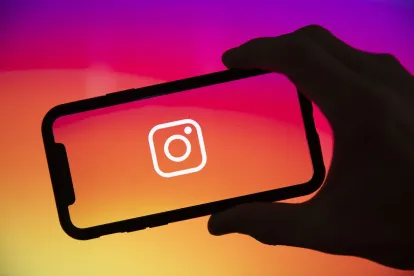The US Court of Appeals for the Ninth Circuit found that a photo- and video-sharing social networking service could not be liable for secondary copyright infringement because embedding a photo does not “display a copy” of the underlying image. Hunley v. Instagram, LLC, Case No. 22-15293 (9th Cir. July 17, 2023) (Bybee, Bumatay, Bennett, JJ.)
Embedding is a method of displaying images on a website by directing a browser to retrieve an image from the host server. Instead of hosting an image file on a home server, a website merely pulls the image, along with any other content, from an external server and displays it.
Alexis Hunley and Matthew Brauer are photographers who brought a class action lawsuit against Instagram on behalf of copyright owners whose work was “caused to be displayed via Instagram’s embedding tool on a third party website without the copyright owner’s consent.” Hunley alleged that Buzzfeed News and Time embedded Hunley’s Instagram posts (copyrighted photos and videos) within news articles. Hunley also alleged that Instagram’s embedding tool violated her exclusive display right under the Copyright Act by enabling third-party websites to display copyrighted photos posted to Instagram.
Hunley’s argument was unsuccessful, and the district court granted Instagram’s motion to dismiss. The district court determined that the Ninth Circuit’s 2007 holding in Perfect 10 precluded relief to Hunley. The court explained that under the “server test” set forth in Perfect 10, embedding websites that do not store an image or video does not “communicate a copy” of the image or video and therefore does not violate the copyright owner’s exclusive display right. The court explained that because Buzzfeed News and Time do not store images and videos, they do not “fix” the copyrighted work in any “tangible medium of express” (a copy), and therefore when they embed the images and videos on a website, they are not displaying “copies” of the copyrighted work. Hunley appealed.
Hunley argued that Perfect 10 was inconsistent with the Copyright Act, but the Ninth Circuit declined to consider the argument in detail as the proper procedure was to seek a rehearing en banc. While the Court was sympathetic to policy arguments advanced by Hunley (as well as other amici), the Court stated it was not its place to create a policy solution. Hunley’s final major argument questioned the validity of Perfect 10 in light of the Supreme Court’s 2014 decision in American Broadcasting Co. v. Aereo, but this too was rejected. The Ninth Circuit failed to see sufficient similarities between the performance and display rights, holding them as two distinct rights with few parallels.
Applying the server test to the facts presented, the Ninth Circuit found that Instagram could not be found secondarily liable for displaying images on third-party sites. Since Buzzfeed News and Time embedded the images and no copy was stored, they could not be liable for direct infringement. Because there was no direct infringement, there could be no secondary infringement, and the Court found that the district court properly dismissed Hunley’s suit.
Hannah Hurley, a summer associate in the San Francisco office, also contributed to this case note.




 />i
/>i

